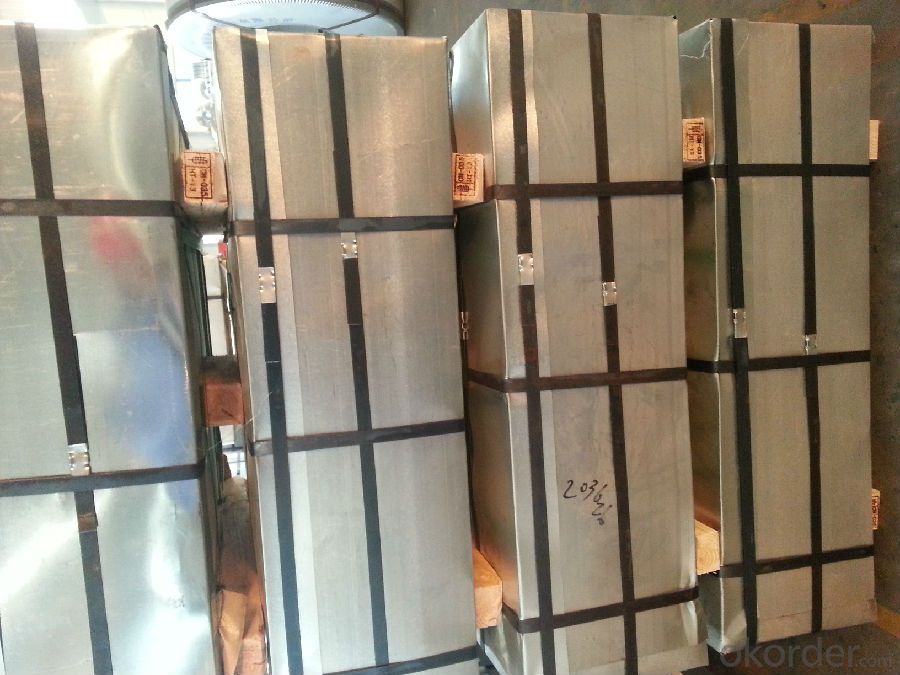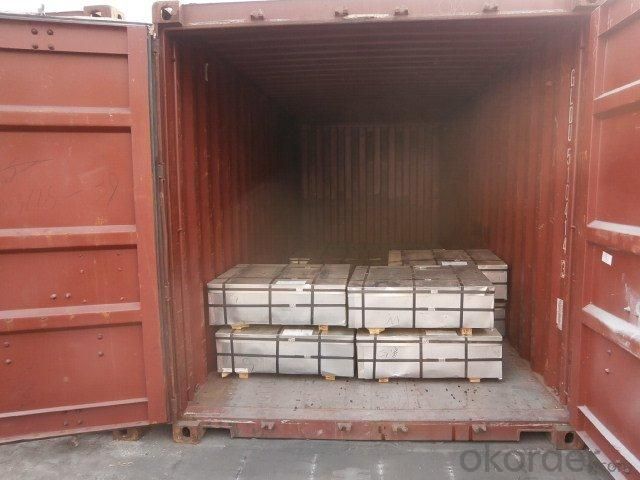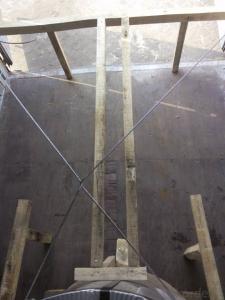Tinplate in SPCC/MR Grade for Tomato Cans
- Loading Port:
- China main port
- Payment Terms:
- TT OR LC
- Min Order Qty:
- 25 m.t.
- Supply Capability:
- 30000 m.t./month
OKorder Service Pledge
OKorder Financial Service
You Might Also Like
1. Products: Tinplate
Tinplate and TFS are widely used for making all types of containers such as artistic cans, tea cans, painting cans, chemical package cans and metal printing etc. Its applications are not limited to containers; recently, they have also been used for making electrical machinery parts and many other products.
2. Specification:
Our goods enjoyed high quality both at home and abroad. We can supply tin free steel as follows:
Technical standard | JISG3303 and GB/T 2520-2008 |
Steel Type | MR / SPCC |
Thickness | From 0.15mm to 0.50mm (Tolerance +/- 0.01mm) |
Width | Normally 600-1050mm (Tolerance +3/-0 mm) |
Coating | 2.8/2.8g/m2 , 2.8/5.6g/m2 ,1.1/1.1 g/m2 |
Temper & Annealing | T1-T5, DR7-8, TS230-TH435, T49-T65(+/- 4) |
Surface Treatment | Bright & Fine Stone & Stone & Silver & Matt |
Payment terms | Letter of Credit (L/C), Telegraphic transfer (T/T) |
Price terms | CFR & CIF price term |
Delivery time | Within 60 days after received L/C or T/T down payment |
Packing | High quality shipping packing which contains thin plastic film, rust-proof paper, metal cover, metal angles and strap sand pallet. |
Minimum order Quantity(MOQ) | 25 metric tons (1X 20'' container) |
3. Pictures:


4. Features of the factory price/ tin free steel/tinplate/tfs/tmbp/etp/spte:
Beautiful Appearance
Excellent Paintability & Printability
Excellent Formability & Strength
Excellent Corrosion Resistance
Excellent Solderability & Weldability
5. FAQ:
We are one of the main producers in China for tinplate, tin free steel and also TMBP. At present, our productivity is more than 450000 MT/year.
For more information about our products or company, pls contact us freely.
Welcome your enquiries and orders.
- Q:How does tinplate compare to other packaging materials in terms of brand recognition?
- Tinplate is a highly recognizable packaging material that offers excellent brand recognition. Its shiny and durable surface stands out on the shelves, making it instantly identifiable and associated with quality. Unlike other packaging materials, such as plastic or paper, tinplate provides a unique and premium look that can enhance a brand's image and help it stand out from the competition.
- Q:Can tinplate be used for renewable energy applications?
- Yes, tinplate can be used for renewable energy applications. It is commonly used for manufacturing solar panels and wind turbines due to its high durability, corrosion resistance, and electrical conductivity properties. Tinplate is also recyclable, making it an environmentally friendly choice for renewable energy projects.
- Q:Can tinplate be used for packaging perishable goods?
- No, tinplate is not suitable for packaging perishable goods as it is not airtight and does not provide adequate protection against moisture and oxygen, which can lead to spoilage of perishable items.
- Q:What are the typical production volumes for tinplate?
- The typical production volumes for tinplate vary depending on the demand and market conditions, but generally speaking, millions of tons of tinplate are produced annually worldwide.
- Q:What are the different tinplate finishes available?
- There are several different tinplate finishes available, including bright, stone, matte, and lacquered. These finishes offer varying levels of shine, texture, and protection to the tinplate surface.
- Q:What is the difference between tinplate and tin-free steel?
- Tinplate is a thin steel sheet coated with a layer of tin, whereas tin-free steel is a steel sheet that does not have a tin coating. The main difference lies in their corrosion resistance properties, where tinplate offers better protection against rust due to the tin layer, while tin-free steel relies on other coatings or treatments to prevent corrosion.
- Q:How does tinplate handle exposure to different atmospheric conditions?
- Tinplate is known for its excellent resistance to atmospheric conditions. It can withstand exposure to various weather conditions, including high humidity, extreme temperatures, and even corrosive environments. The tin coating on the steel substrate acts as a protective barrier, preventing oxidation and corrosion, which helps in maintaining the integrity and durability of the tinplate. Overall, tinplate demonstrates superior performance when exposed to different atmospheric conditions.
- Q:What are the common corrosion protection methods used for tinplate?
- The common corrosion protection methods used for tinplate include electroplating with tin, applying organic coatings such as lacquers or varnishes, and using corrosion inhibitors.
- Q:How many kinds of tinplate are there? What is the code number?
- Tinplate, also known as tin plated iron, is the common name for tin plated steel sheet. The English abbreviation is SPTE. It is a cold-rolled low carbon steel sheet or strip coated with commercially pure tin on both sides. Tin plays a major role in preventing corrosion and rusting. It will be the steel strength and formability and corrosion resistance of tin soldering, and beautiful appearance with a material, corrosion resistant, non-toxic, high strength and good ductility properties.
- Q:What are the main factors influencing the price volatility of tinplate?
- The main factors influencing the price volatility of tinplate are the global supply and demand dynamics, fluctuations in raw material costs (such as tin and steel), changes in manufacturing and production capacities, shifts in consumer preferences and market trends, and geopolitical factors impacting trade and tariffs. Additionally, macroeconomic indicators like currency exchange rates and overall economic stability can also play a role in determining the price volatility of tinplate.
1. Manufacturer Overview |
|
|---|---|
| Location | |
| Year Established | |
| Annual Output Value | |
| Main Markets | |
| Company Certifications | |
2. Manufacturer Certificates |
|
|---|---|
| a) Certification Name | |
| Range | |
| Reference | |
| Validity Period | |
3. Manufacturer Capability |
|
|---|---|
| a)Trade Capacity | |
| Nearest Port | |
| Export Percentage | |
| No.of Employees in Trade Department | |
| Language Spoken: | |
| b)Factory Information | |
| Factory Size: | |
| No. of Production Lines | |
| Contract Manufacturing | |
| Product Price Range | |
Send your message to us
Tinplate in SPCC/MR Grade for Tomato Cans
- Loading Port:
- China main port
- Payment Terms:
- TT OR LC
- Min Order Qty:
- 25 m.t.
- Supply Capability:
- 30000 m.t./month
OKorder Service Pledge
OKorder Financial Service
Similar products
New products
Hot products
Hot Searches
Related keywords




























